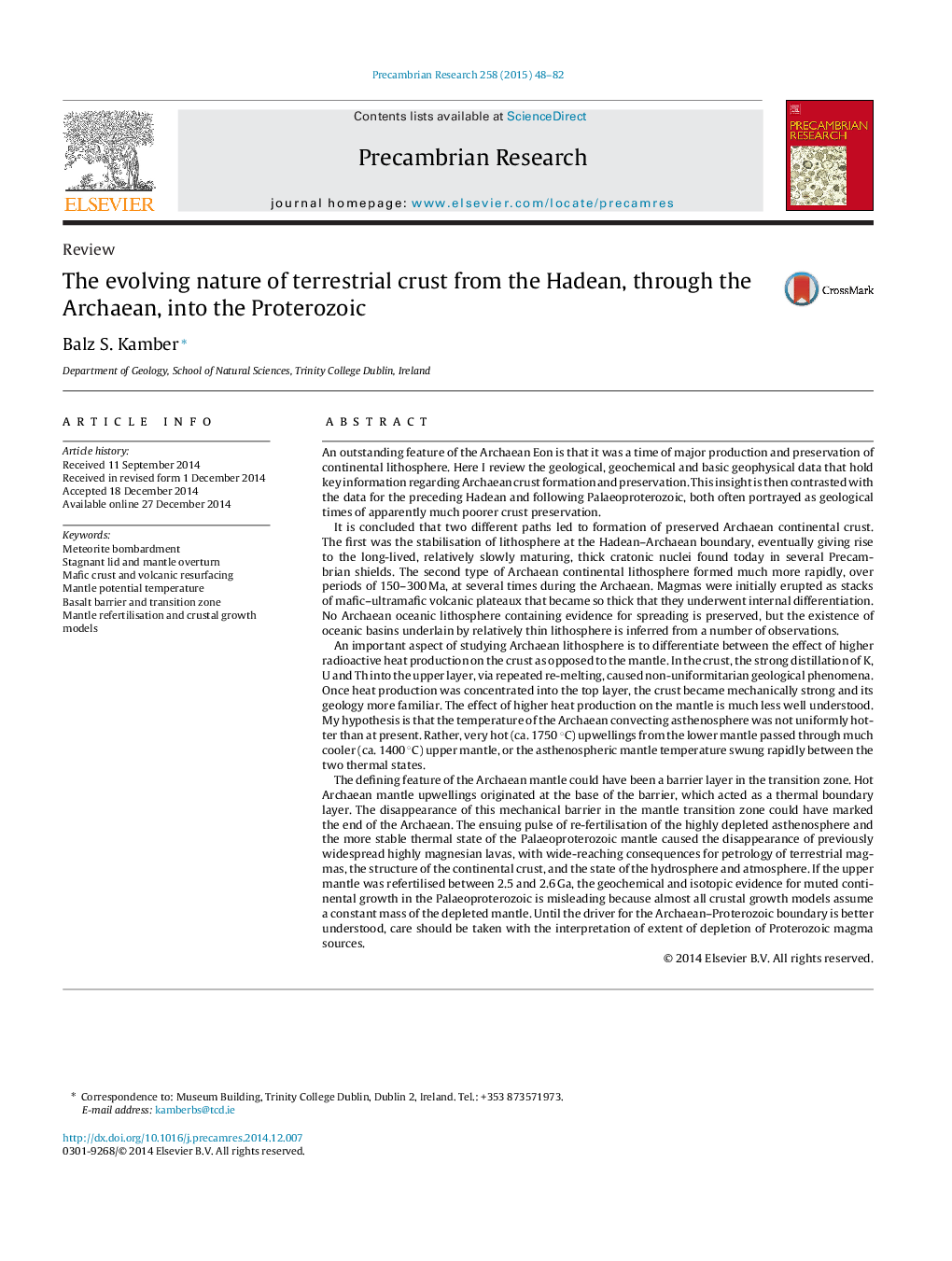| کد مقاله | کد نشریه | سال انتشار | مقاله انگلیسی | نسخه تمام متن |
|---|---|---|---|---|
| 4722732 | 1639617 | 2015 | 35 صفحه PDF | دانلود رایگان |

An outstanding feature of the Archaean Eon is that it was a time of major production and preservation of continental lithosphere. Here I review the geological, geochemical and basic geophysical data that hold key information regarding Archaean crust formation and preservation. This insight is then contrasted with the data for the preceding Hadean and following Palaeoproterozoic, both often portrayed as geological times of apparently much poorer crust preservation.It is concluded that two different paths led to formation of preserved Archaean continental crust. The first was the stabilisation of lithosphere at the Hadean–Archaean boundary, eventually giving rise to the long-lived, relatively slowly maturing, thick cratonic nuclei found today in several Precambrian shields. The second type of Archaean continental lithosphere formed much more rapidly, over periods of 150–300 Ma, at several times during the Archaean. Magmas were initially erupted as stacks of mafic–ultramafic volcanic plateaux that became so thick that they underwent internal differentiation. No Archaean oceanic lithosphere containing evidence for spreading is preserved, but the existence of oceanic basins underlain by relatively thin lithosphere is inferred from a number of observations.An important aspect of studying Archaean lithosphere is to differentiate between the effect of higher radioactive heat production on the crust as opposed to the mantle. In the crust, the strong distillation of K, U and Th into the upper layer, via repeated re-melting, caused non-uniformitarian geological phenomena. Once heat production was concentrated into the top layer, the crust became mechanically strong and its geology more familiar. The effect of higher heat production on the mantle is much less well understood. My hypothesis is that the temperature of the Archaean convecting asthenosphere was not uniformly hotter than at present. Rather, very hot (ca. 1750 °C) upwellings from the lower mantle passed through much cooler (ca. 1400 °C) upper mantle, or the asthenospheric mantle temperature swung rapidly between the two thermal states.The defining feature of the Archaean mantle could have been a barrier layer in the transition zone. Hot Archaean mantle upwellings originated at the base of the barrier, which acted as a thermal boundary layer. The disappearance of this mechanical barrier in the mantle transition zone could have marked the end of the Archaean. The ensuing pulse of re-fertilisation of the highly depleted asthenosphere and the more stable thermal state of the Palaeoproterozoic mantle caused the disappearance of previously widespread highly magnesian lavas, with wide-reaching consequences for petrology of terrestrial magmas, the structure of the continental crust, and the state of the hydrosphere and atmosphere. If the upper mantle was refertilised between 2.5 and 2.6 Ga, the geochemical and isotopic evidence for muted continental growth in the Palaeoproterozoic is misleading because almost all crustal growth models assume a constant mass of the depleted mantle. Until the driver for the Archaean–Proterozoic boundary is better understood, care should be taken with the interpretation of extent of depletion of Proterozoic magma sources.
Journal: Precambrian Research - Volume 258, March 2015, Pages 48–82